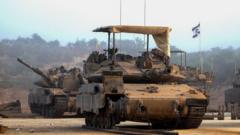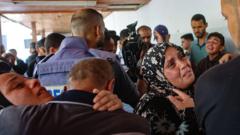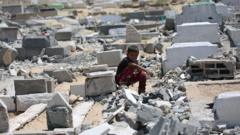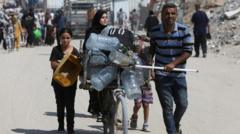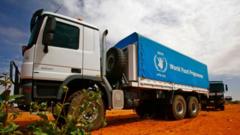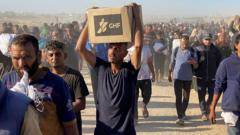Following a catastrophic earthquake that struck Mandalay, survivors are grappling with severe devastation, inadequate relief, and the emotional toll of lost loved ones. Eyewitness accounts highlight the dire humanitarian crisis worsened by an unyielding military government and a fractured international response.
Despair in Mandalay: Earthquake Survivors Face Harrowing Reality
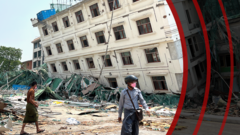
Despair in Mandalay: Earthquake Survivors Face Harrowing Reality
A harrowing situation unfolds in Mandalay, Myanmar, as survivors of a devastating earthquake confront immense destruction and a lack of aid amid ongoing political turmoil.
Driving through Mandalay reveals the staggering extent of destruction following Friday's earthquake, with nearly every street featuring buildings that have crumbled into debris. The city's northern and central districts bear the heaviest toll, evident in collapsed structures and unsafe buildings riddled with cracks. Patients at the main city hospital are being treated outdoors, underscoring the urgent need for humanitarian aid.
Despite the military government's restrictions on foreign journalists, a BBC team entered Mandalay to document the plight of survivors. The situation is dire, with victims like 41-year-old Nan Sin Hein anxiously waiting for news of trapped family members. Her 21-year-old son, Sai Han Pha, remains beneath the ruins of a construction site.
The earthquake, measured at 7.7 in magnitude, devastated buildings with little sign of rescue operations commencing. With the political landscape marked by an ongoing civil war, overwhelmed security forces struggle to provide adequate relief efforts. This lack of support leaves families stranded, having lost everything in a matter of moments.
As the military junta calls for international assistance, the country faces obstacles in obtaining aid due to strained diplomatic relationships. Rescue operations have begun with limited international help, focusing on the few critical areas where significant casualties are expected. Rescuers endure extreme weather conditions as they sift through debris with basic tools, looking for survivors in the oppressive heat.
Amidst the chaos, families await news, caught between despair and hope. Many have turned their homes into makeshift camps, sleeping outdoors to escape the aftershocks that continue to rattle the city. Elderly survivors like Daw Khin Saw Myint plead for assistance, exposing the inadequacies in the immediate relief response.
The local hospital is overwhelmed, packed with both the injured and deceased as families scramble to care for their loved ones. Medical staff are scarce, and relatives take on caregiving roles where formal aid is lacking. The emotional toll is palpable—countless families face the grim reality of identifying lifeless bodies.
Mandalay, a historic city now marred by tragedy, paints a picture of desperation and resilience among its survivors. With each day that passes, the hope for recovery and rebuilding grows ever dimmer, leaving the community to grapple with the profound impact of the disaster and the ongoing political unrest that complicates relief efforts.



